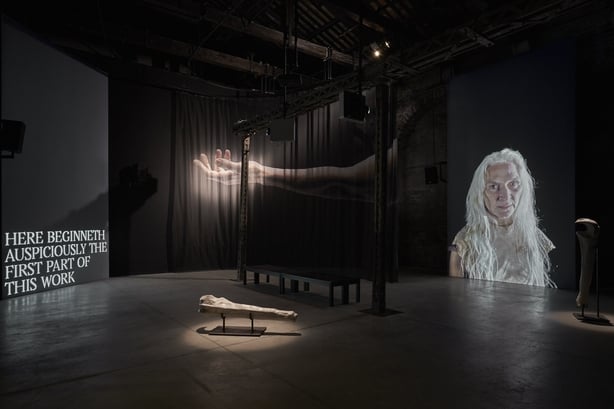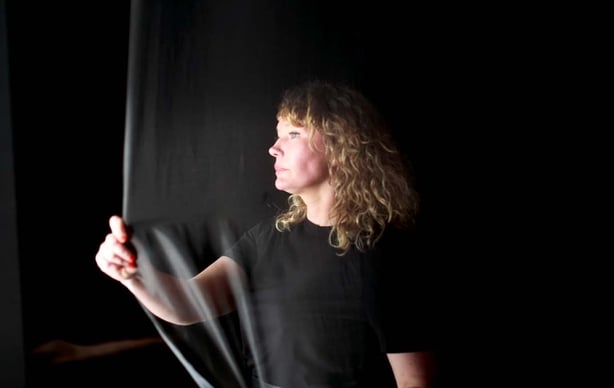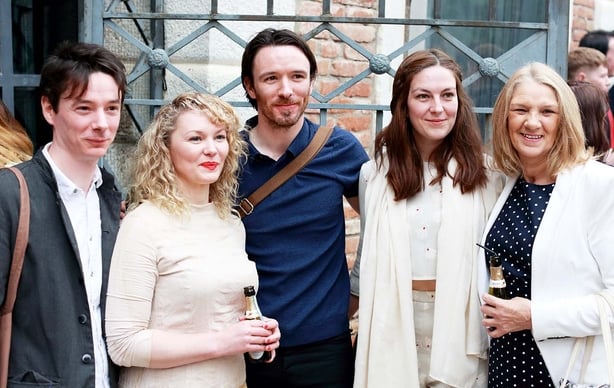It’s a Wednesday afternoon in Venice, and I am sitting in Paradiso Cafe watching boats drift across the Laguna. Four days ago, it was here that I was fortunate enough to have lunch with the President, Michael D Higgins and his wife Sabina.
I discovered over lunch that our President, a poet and a scholar, will likely discuss anything from alchemy and the origins of language through the last five Chomsky books to fossils in the Sahara desert. The mind boggles at how our own articulate presidential bibliophile might be asked to encounter his counterpart of the orange variety. A potential meeting of the mind and the mindless.
When I was told I would be representing Ireland at the Venice Biennale over a year ago now, I took it with a sober sense of responsibility. I had only ever been to the venerable Biennale once in my life, back in 2007 when Gerard Byrne - one of my favourite artists - represented Ireland. It was an inspiring and overwhelming experience then for a young artist, an opportunity to see art of exceptional quality from all over the world. However, ten years later and representing my country at the National Pavilion in a very different political moment, it is now that I understand the true value of contemporary art.
Don’t get me wrong, artists are great, but we live very privileged if precarious lives.
It was on this trip in 2017 that I understood art in a new and vital way. I now understand that art itself possesses possibilities to expose us to nuanced and complex ideas about humanity that can be afforded nowhere else. Art in its essence proposes the very simple idea that, in being affected by art we can be affected by each other. In a time when the world moves towards totalising and regressive positions that redraw old and forgotten hatreds, THIS matters.

There has been much talk of how this year’s Biennale Arte Viva Arte’s position is unpolitical. Indeed, the curatorial premise of Christine Macel’s main show proposes a polemic to the politically-saturated time we live in. She offers a show that claims art in itself is enough. That the lives of artists, and how they lead them, offer an example of how freedom might exist beside totalitarianism. Macel claims that artists’ work has a shamanic quality in their ritualisation of culture, and by extension these are truly holy and essential practices.
This idea truly disappoints me. Don’t get me wrong, artists are great, but we live very privileged if precarious lives. It is the way art itself communicates that truly matters. Despite this flaccid curatorial premise, the National Pavilions of this year’s Venice Biennale told another story. One in which the saturation of politics proved a fertile and vital place for the articulation of anxiety around rising nationalism, through political empathy and solidarity with migrant populations, and a growing fear of new world orders and false truths in language and reality.
If there is anything shamanic about art, it is the artist’s ability to understand the chaos of their times and describe it sensorially to others.
The standout for me was the Turkish Pavilion by Cevdet Erek, whose installation pointed to the subtly of control by state forces on the architectural and sonic landscape of everyday life. It resonated deeply with the unfathomable changes in everyday life in contemporary Turkey. It claims the totalitarian past was not over, but was palatable in the present. Almost every national pavilion proposed that remembering history was in fact a radical act. One that could demand our awareness to the politics of everyday life. This idea could somehow even resist the untruth of the now. Evident in the representations from the New Zealand Pavilion by Lisa Reihana to Anne Imhof's stoic German Pavilion that emphasised the coldness and brutality of contemporary consumer capital.

Art without politics is a falsehood. The proof of this can be seen in Venice’s own San Marco Square, which was built by funds from public subscription as an act of civic moral building after the Venetians had been exiled from Constantinople in the 12th century. Today, it stands as the backdrop to more than a million tourist selfies to describe the 'being there' beauty that is essential to Venice. The shamanic magic of art, its alchemy, is to reveal its politics through aesthetics. Through what we see and feel when we encounter it.
We know we live in deeply troubled and changing times, and we need every resource of understanding possible to navigate this unknown future. More importantly, we need a sense that we can, through collective acts of imagination, change it. If there is anything shamanic about art, it is the artist’s ability to understand the chaos of their times and describe it sensorially to others. Being an artist at its most basic essence was once described to me by the incredible Australian artist Mikala Dwyer as; the act of transforming basic material in the world from one thing to another. From clay to another form of clay form, one material object to another. From an image to an idea.

I think about her words almost every day when I make art. Her words resonate with the questions President Michael D Higgins asked about Chomsky and language: What exists beyond what we know? How do we survive these times of post truth? What might art’s shamanic alchemy look like in these times? I am reminded of Lizzie Borden’s film Born in Flames from 1984 when the character Isabel, DJ host of a feminist pirate station radio Ragazza, says "alchemy is the art of turning shit in to Gold".
Jesse Jones: Tremble Tremble runs from May 13–November 26, 2017 at the Irish Pavilion at the Venice Biennale.


